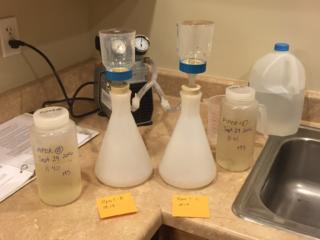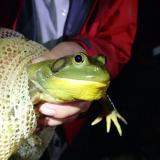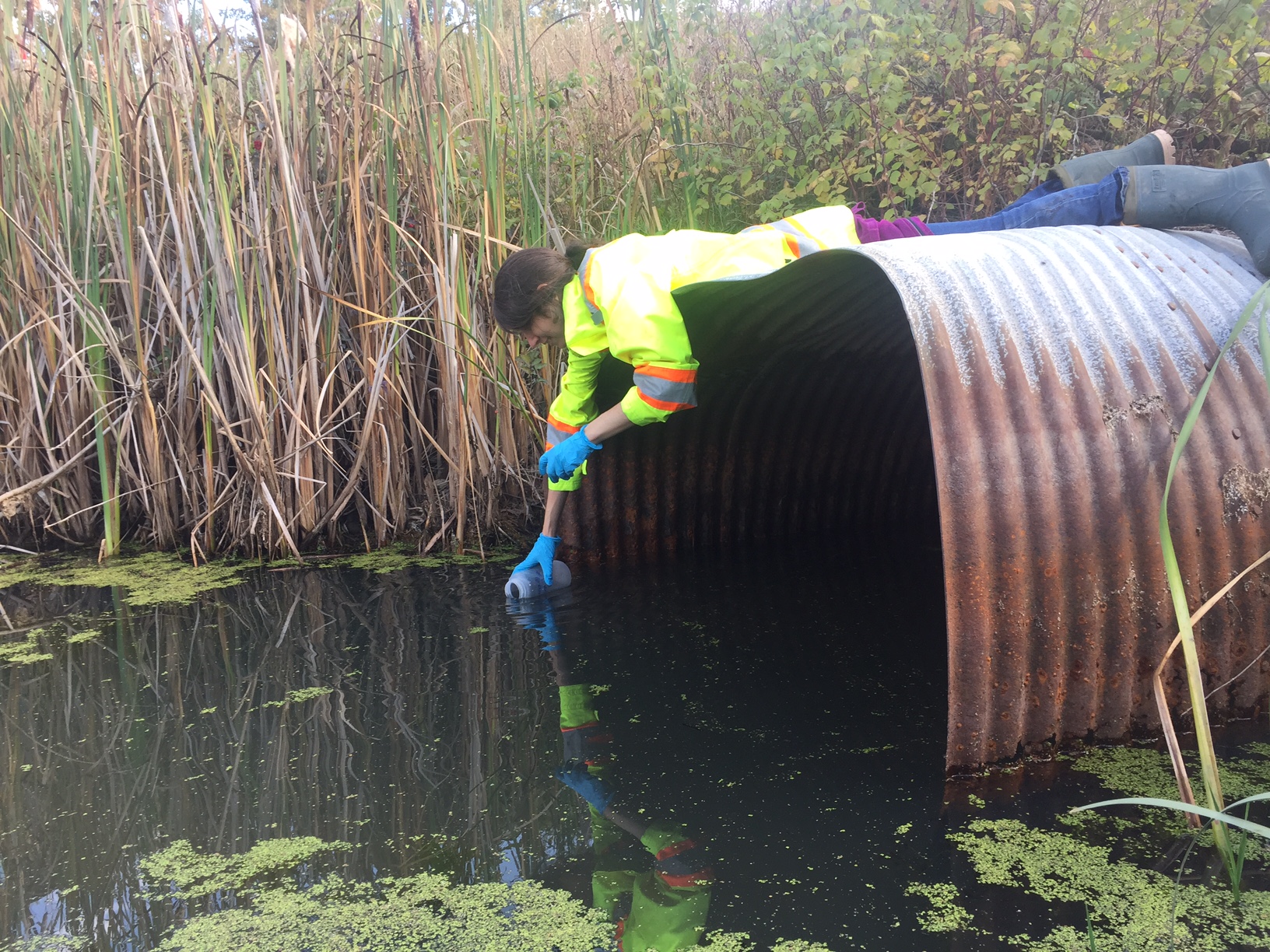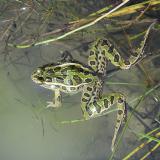Early Detection by eDNA
Thanks to Research Coordinator Morgan Sternberg, CKISS is utilizing cutting-edge technology for early detection of American Bullfrogs (Lithobates catesbeianus) in the Creston area.

Water samples are painstakingly gathered from water bodies considered to be at risk of Bullfrog invasion. The samples are then filtered and sent to a lab in Victoria for analysis. If Bullfrog DNA is detected in the sample, we know that we need to increase our surveillance efforts in that water body.

On our recent field day, water samples were collected from 12 different locations around the Creston valley. The results from this sample will guide our planning for next season’s field work in the Creston area, and hopefully will enable us to minimize the threat of these invasive frogs.
Why are Bullfrogs a Threat?

There are several large populations of Bullfrogs in Idaho, and they were sighted on this side of the BC-Idaho border near Highway 22 this summer. If Bullfrogs reach the Creston area, these voracious predators could have major impacts on the amazing biodiversity of our valley.
- Bullfrogs prey on, out-compete, native frog species, including the endangered Northern Leopard Frog and the protected Pacific Chorus Frog and Columbia Spotted Frog.

Northern Leopard Frog (Rana pretiosa) - The only population of Northern Leopard Frogs in the Northern Rockies is in Creston… and they are now threatened by Bullfrogs!
- Bullfrogs also eat native snakes, ducklings, sometimes even kittens!
- Bullfrogs carry a virus that affects nativeamphibians, but does not impact the Bullfrogs.
- Bullfrogs reproduce up to 10 times faster than native frog species, pushing them out of preferred habitats.
We need your help to prevent a Bullfrog Invasion!
Find out the details on how to identify American Bullfrogs.
To report sightings or calls heard: Phone 1-250-354-6333 or email kootenaybullfrog@gov.bc.ca or download the Report-Invasives App for iPhone and iPad or Android
When reporting sightings, please note where and when you spotted it and take a photo if possible.


